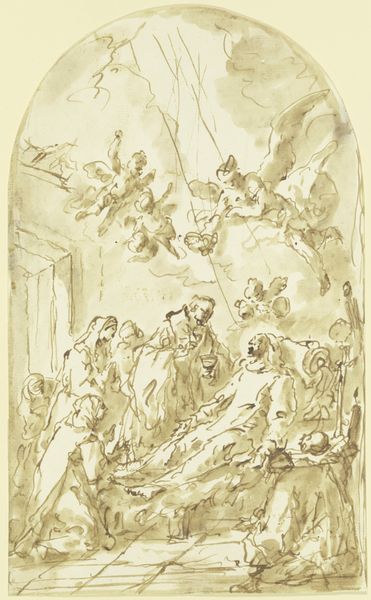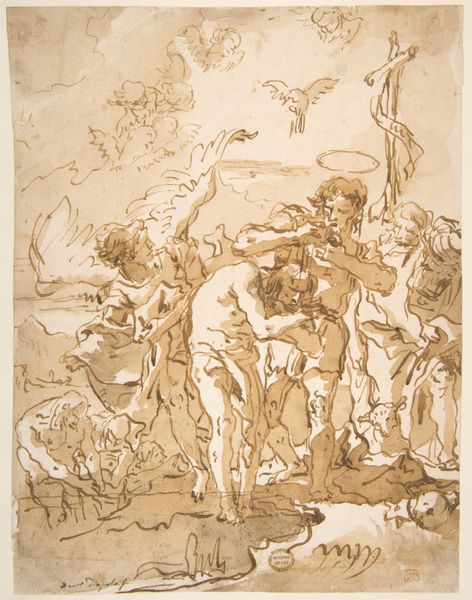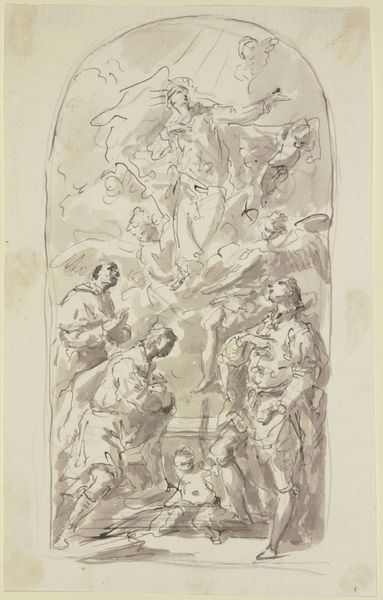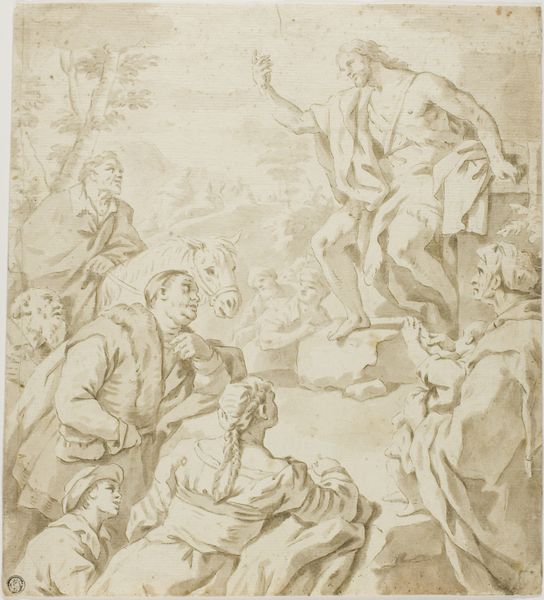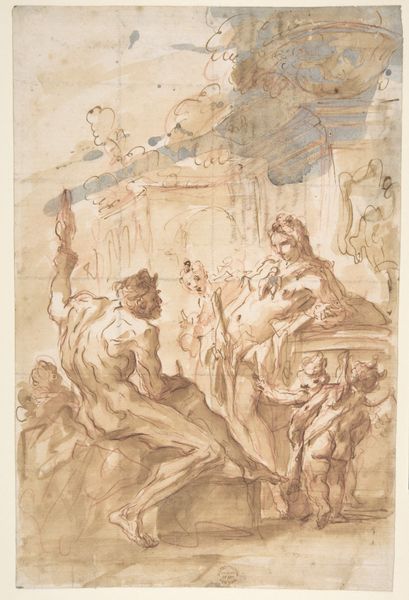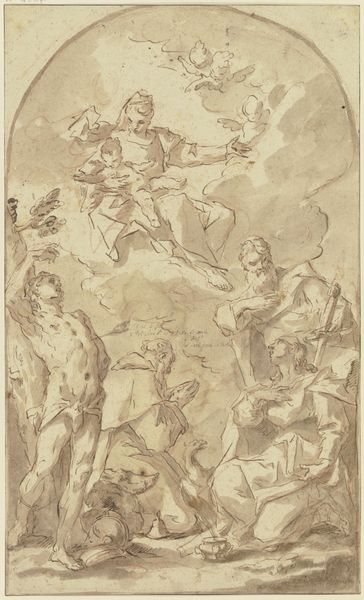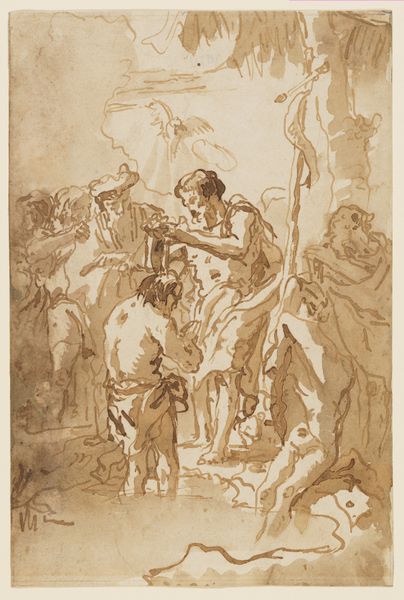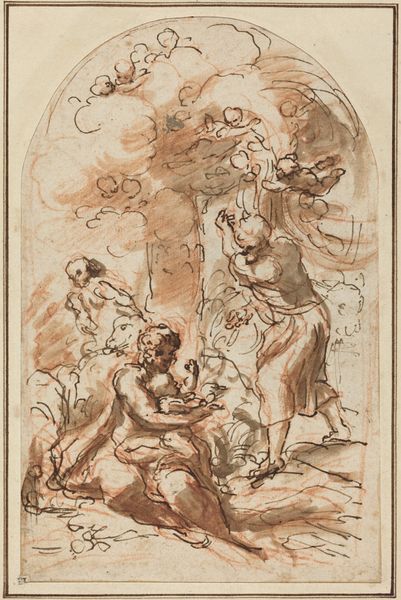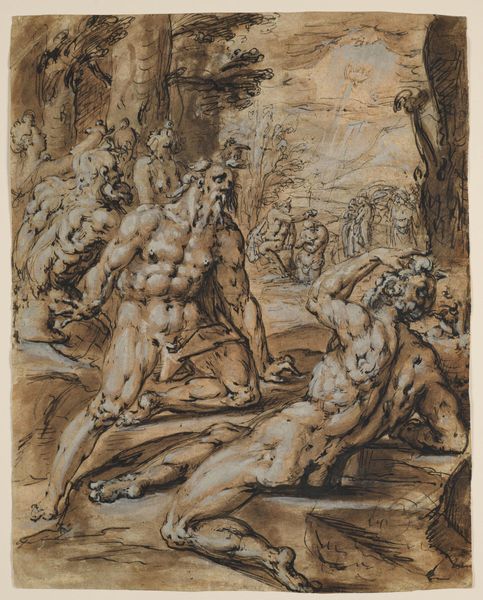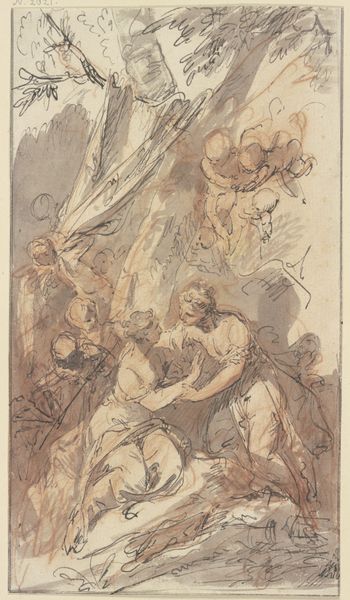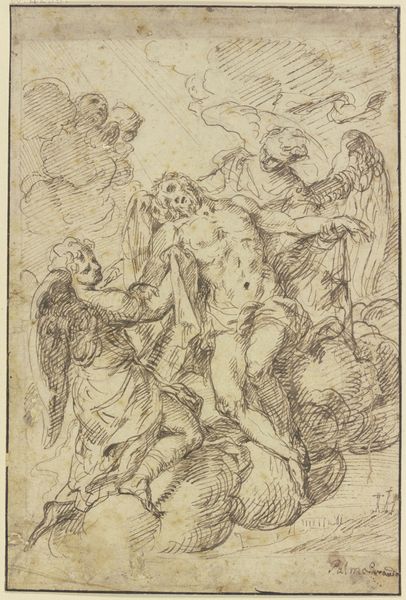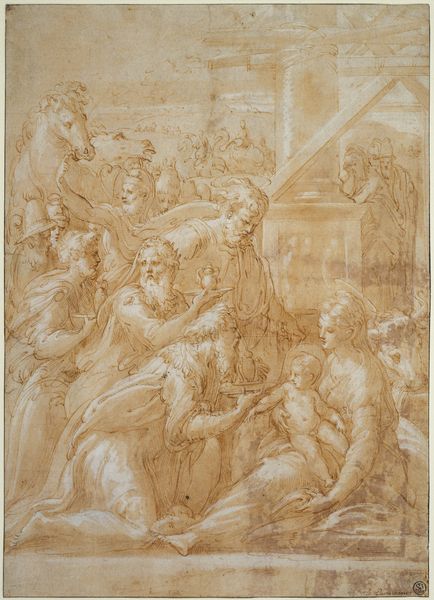
drawing, ink
#
drawing
#
baroque
#
figuration
#
ink
#
15_18th-century
#
history-painting
Copyright: Public Domain
Curator: This intriguing sepia ink drawing is entitled “Martyrdom of Saint John.” Attributed to Gaspare Diziani, it resides here in the Städel Museum. Editor: The dynamism here is undeniable! Look at how the figures burst forth, almost fighting against the confines of the arched frame. A swirl of intense activity, indeed. Curator: I find Diziani's use of wash remarkable, creating an atmosphere of ethereal lightness juxtaposed against the dense hatching in the foreground. This contrast seems pivotal for constructing visual drama. Editor: It's compelling. One observes how the lower figures—darker, grounded, actively working, presumably stoking the fire—set up this division between earth and divine intervention depicted above, where angels attend Saint John. One could imagine what Diziani may have had to say about these executioners. Curator: Indeed. Structurally, it uses classic Baroque devices. Consider how the implied diagonal leads the viewer's eye upward, culminating in the radiant figures above. And then, look again at the angel at the very top—the gestures appear as conduits to this martyrdom. Editor: I notice that the setting itself is strangely devoid of architectural grandeur that period depictions of martyr scenes often employed. Diziani minimizes spectacle; all attention falls on John’s expression and relationship between those committing acts of power and John. What's his positioning here? Where is salvation during turmoil and for whom is that granted? Curator: Absolutely, the emotional valence eclipses everything. It strikes me how such economical strokes build layers of emotional nuance. It's not simply violence, there is sorrow, reverence, a palpable sense of momentous spiritual transformation represented in pure line and shadow. Editor: Thinking more about context… during the 18th-century, religious narratives fulfilled public roles that communicated values. Diziani likely addressed both elite and broader audiences accustomed to interpreting familiar iconographies but equally, reflecting society’s religious sentiments within this. Curator: The economy of means for constructing drama resonates deeply, an achievement to consider what can occur through ink and wash alone. Editor: It’s truly an insight to revisit not just how saints were martyred but also whose voices were favored and represented amid shifting power dynamics within Gaspare’s society, at this time.
Comments
No comments
Be the first to comment and join the conversation on the ultimate creative platform.
